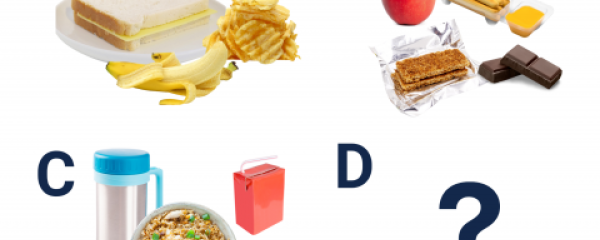What is it all about?
Students analyze food advertisements (ads) that are prevalent in community settings and targeted to youth, in order to understand how food marketing and advertising can influence their food choices and eating behaviours. Students research food claims to inform their food choices, considering factors they can and cannot control.
Curriculum Connections
Grade 7
Health & Physical Education: A1.1, A1.3, A1.5, A1.6, D3.1
Language - Media Literacy: 1.1, 1.2, 1.3, 1.4, 1.6, 2.1, 2.2, 3.1, 3.2, 3.3, 3.4
Grade 8
Health & Physical Education: A1.1, A1.3, A1.5, A1.6, D2.1, D3.1
Language - Media Literacy: 1.1, 1.2, 1.3, 1.4, 1.6, 2.1, 2.2, 3.1, 3.2, 3.3, 3.4
What may be needed?
Food ads found in various locations in the community that are designed to target and influence youths’ food choices (e.g., sport drink ads in a skating arena, fast food posters at bus stops, ads in bathrooms or at the food counter at movie cinemas)
How is it done?
- Have students imagine they are consultants for a food advertising agency that is interested in learning more about youth to create food advertising campaigns appealing to them. Have students work in small groups to create a youth profile to help their company learn about youths’ interests.
- Have students consider the following themes for their youth profile: youths’ interest in music, sport, fashion, recreational activities, popular movies, TV shows, celebrity icons, social media use and habits, video games, streaming interests, and community gathering spots (fast food restaurants, food courts, malls, arenas, recreation centres).
- Explain to students that youth are a popular group to be targeted by food ads. Advertisers know that youth are independent and have freedom to make their own food choices at home, when eating out, or when involved in activities in the community. Advertisers use media to influence the food choices and eating decisions of youth. These media include mass media (e.g., TV, radio, magazines, billboards) and digital media (e.g., websites, banner ads, smartphone ads, social media, video games, streaming apps). Advertisers are strategic in their placement of food ads in a variety of settings where youth are most likely to congregate, such as movie theatres, malls, fast food restaurants, convenience stores, sporting events, festivals, and social events.
- Ask students how they can determine whether the claims being made in food ads are true (e.g., trust in the brand, believing the integrity of the celebrity endorsing the product, trying it out, researching it, reading the product information and nutrition label).
- Have students work alone or in pairs to identify where they spend the majority of their recreational time when not at home or online. Then have the pairs or groups generate a list of the types of food ads that they notice in various locations in the community that they think are designed to target and influence youth.
- Have students choose one of the food ads they identified and analyze the food marketing techniques used and the implied messages that are designed to influence their food choices. Provide students with food marketing techniques to focus their attention, such as:
- Celebrity endorsements
- Use of colours that spark interest or evoke emotion: red = spicy hot or exciting, blue = cool and refreshing, green = natural, white = pure, yellow = energy
- Use of food energy claims: “30 grams of protein,” “0 grams of fat,” “2 % carbs,” “low-calorie”
- Use of word association: “all natural,” “healthy,” “baked,” “made better,” “simply good,” “lifestyle,” “non-GMO”
- Claims about why the product is a good choice, such as “satisfies hunger,” “helps you to build muscle,” or “provides energy for performance,” and use of gimmicks, such as free food, points toward movie tickets, or instant prizes
- Have pairs or groups research the claim associated with the food or beverage in the ad to evaluate its accuracy, and then use the ingredient and nutrition label to decide if they would buy the product or persuade others to buy it.
- Have students share their analyses with the class to compare the similarities and differences in the food marketing techniques used, depending on the product and ad location in the community.
- Have students consider adjustments to their food choices when eating out in the community based on the following criteria: their understanding of food claims, marketing claims and advertising techniques, the factors they can and cannot control, and as part of their overall healthy eating plan.
- Have students work alone or in small groups to create media messages, taking into consideration the youth profiles they created in their pairs or groups, to share with other youth with the aim of promoting healthier eating behaviours. Have students include effective strategies for analyzing food ad claims they encounter on social media and making informed decisions about their food choices.
Opportunities for Assessment
- Use students’ analysis of their chosen food ad to assess their understanding of food marketing techniques used to influence food choices.
- Use students’ analysis of the claims associated with their selected food or beverage and their purchasing decision to assess their understanding of using ingredient and nutrition labels to make informed decisions about their food choices and to promote healthier eating behaviours.
- Use the student-generated media messages to assess students’ understanding of ways to encourage healthier eating practices.
Ideas for Extension
- Have students research the difference between food marketing claims versus regulated claims in food ads and consider how these claims might influence their food choices.
- Have students create advocacy statements urging local restaurants to highlight healthier food options on their menus.
Educator Notes
- Students bring their learning home to their families, and they have variable amounts of control over the food they eat at home and the food they bring to school. Consult Creating a Safe and Inclusive Learning Environment for tips for talking about healthy food choices.
- Consult Additional Resources for more information about marketing techniques and their influences on people’s food choices.
- Consider accessing Canada’s Food Guide for more information about benefits of being aware of food marketing and how to be aware of food marketing when making food choices.



